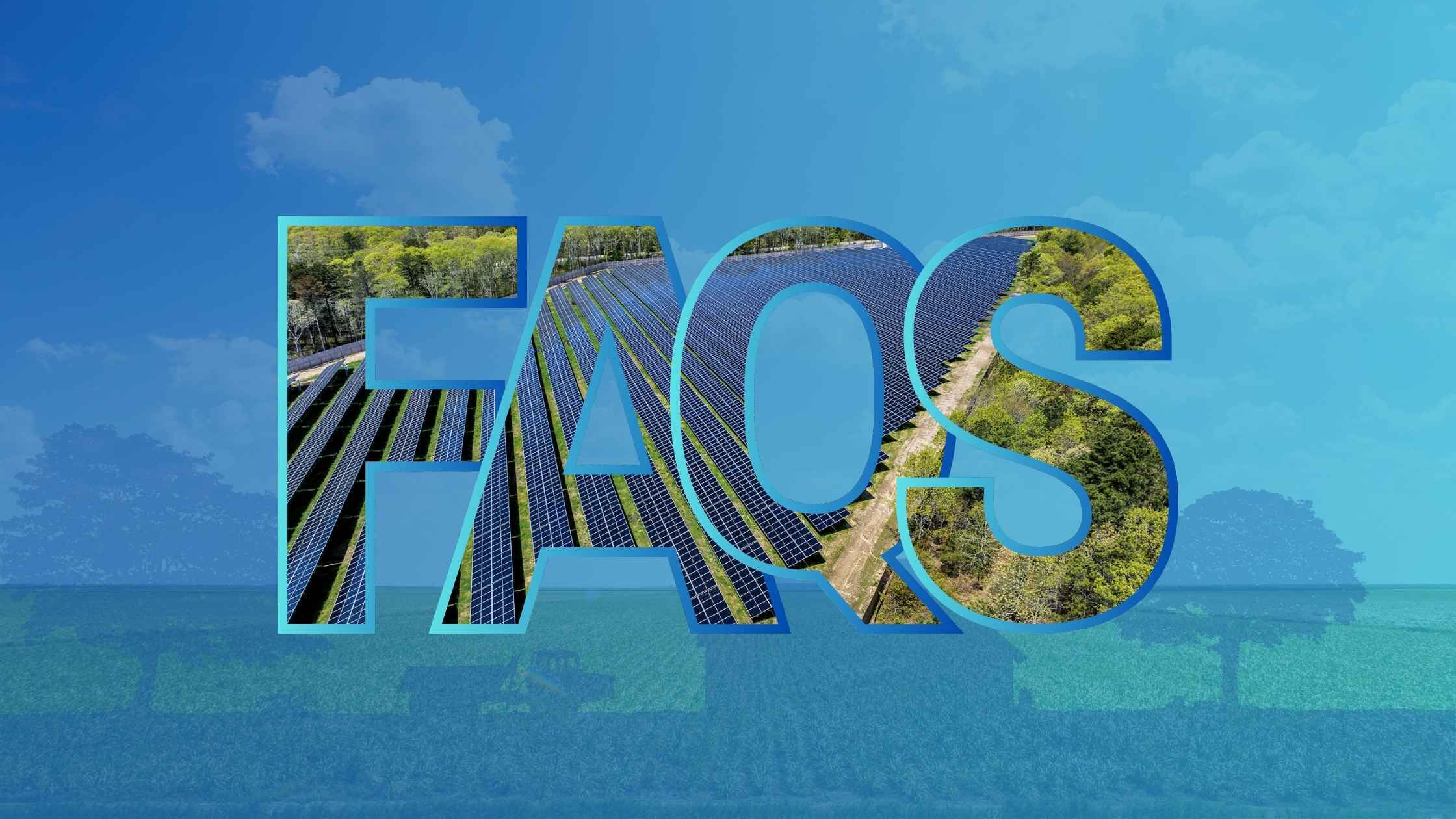What is a solar farm?
A solar farm is essentially a power plant that generates electricity from the sun and is typically located on a rather flat field in rural areas, giving rise to the name, ‘solar farm’.
Solar farms are typically ground-mounted and not on rooftops. Similar to how you would construct a large fence, foundations are inserted into the ground, racking installed on top, and the panels placed on the racking. The electricity goes directly into the local grid to provide clean energy to residents and businesses in the area.
Solar and the Environment
PureSky Energy always carefully assesses any impact to the natural state of the site and weighs them against the long-term environmental benefits of generating clean energy.
Are solar panels safe?
Yes, solar panels are safe. Most panels installed on solar farms are silicon based and fully sealed. There are no hazardous materials that the land will be exposed to during the normal construction or operation of the solar farm. Solar farms are more than just safe – they support local ecosystems and nearby agriculture by providing a refuge for local animals and through planting native, pollinator-friendly plants.
What is the solar farm’s impact on water quality?
There are typically no water quality impacts associated with the long-term operation of solar farms. During construction, PureSky Energy implements stormwater best management practices and regulations designed to manage surface water runoff and flow rate.
Do solar farms product a lot of noise?
No, solar farms are quiet neighbors. The solar farm’s inverters produce a very low decibel sound during the day. At night, the solar farm does not produce power or sound. Will the solar panels produce glare or reflections?
As with any reflective surface, there will be some reflection but similar to how a window reflects light. We use plants or other natural features to screen the solar panels from view
from public view, so any reflection will not be visible.
From Selecting a Site to Operating a Solar Farm
Solar development is lengthy and complicated process with many steps. At PureSky we have experts for every stage of the process to efficiently develop, build and operate sites.
How do you select land for solar?
We look for large areas that receive a lot of sunlight and are free from trees, buildings or other obstructions that create shade. The land is preferably flat or gently sloping and close to electricity infrastructure. When assessing the land, we review the environmental impact and permitting pathway, preferring sites where we can minimize our impact on the
surrounding ecosystems.
How long does it take to develop and construct a solar farm?
From start to finish, it generally takes around 2 to 4 years from signing an agreement with a landowner to placing a solar farm in operation. Development takes around 1 to 2 or more years and is a complex process that involves many stakeholders. The timelines for development depend on the utility’s interconnection process, and local permitting and approval processes. Construction can take an additional 6 to 18 months, depending on seasonal considerations.
Who is responsible for operating and maintaining the solar farm?
PureSky Energy will be responsible for the operation and maintenance of the solar farm, including snow removal, vegetation management, and any mechanical maintenance. Typically, we would only need to visit the site a few times per year and the disruption is minimal or if at all noticeable.
Whenever possible, we prefer to use local contractors to handle vegetation management, including using sheep or other animals to graze.
Can I still use my property for other uses even with the solar farm on it?
Yes, many landowners only lease us a portion of their property and use the remaining land to continue farming or operating their business. During diligence and permitting period and up until construction starts, you can continue to use the land as you always have, with the caveat that you would not do anything to the land that would prevent constructing or operating the solar farm. For example, constructing a permanent structure on the parcel of land where we are planning to build the solar farm, or a structure or vegetation that would shade the solar farm in the future would not be allowed.
Solar Farm Leasing Explained
During discussing your solar farm lease, we will walk you through the terms and conditions as well as answer any questions you may have. We are interested in developing a long-term relationship with our solar hosts that is mutually beneficial.
What’s in a typical solar farm lease?
A solar farm lease will include the development and permitting period, the operational period, as well as decommissioning the solar farm.
How long will you lease my land?
Typically, the term for our land leases ranges from 25 to 30 years but this can vary depending on the region and the solar farm. We also may offer extensions nearing the end of the lease, which will be in addition to the original lease term. While discussing the lease with you, we will explain the specifics of your lease terms.
What happens immediately after a lease is signed?
Once the lease has been finalized, PureSky will begin the permitting and due diligence phase. That includes further diligence, permitting, environmental studies, agreements with the utilities among other requirements. We will regularly update landowners with the progress of their solar farm and what they can expect next. During this permitting period, you will also receive option payments. Full lease payments start typically when the site becomes operational or as laid out in your lease agreement.
What happens at the end of my lease?
Under the lease, PureSky Energy will be responsible for the decommissioning of the solar farm at the end of the lease, including any associated costs. Decommissioning of solar farms refers to the process of safely dismantling and removing a solar energy installation at the end of its useful life or when it is no longer operational. This process ensures that the land is returned in a state that it can be used for its original purpose or repurposed for another use.
How much will I get paid for leasing my land?
Lease rates vary a great deal depending on several factors, including the location, the cost of power, local solar programs, and more. We offer competitive rates for the market and are typically above the rentable value of the land. Lease rates are not tied to the production of the solar farm and will be paid out as laid out in the lease agreement. In addition to lease rates during the operational period of the solar farm, we also pay option rates during the due diligence and permitting period.
Follow us on Social
Stay up to date with everything to do with community solar, renewable energy, and sustainability on your favorite platform.














